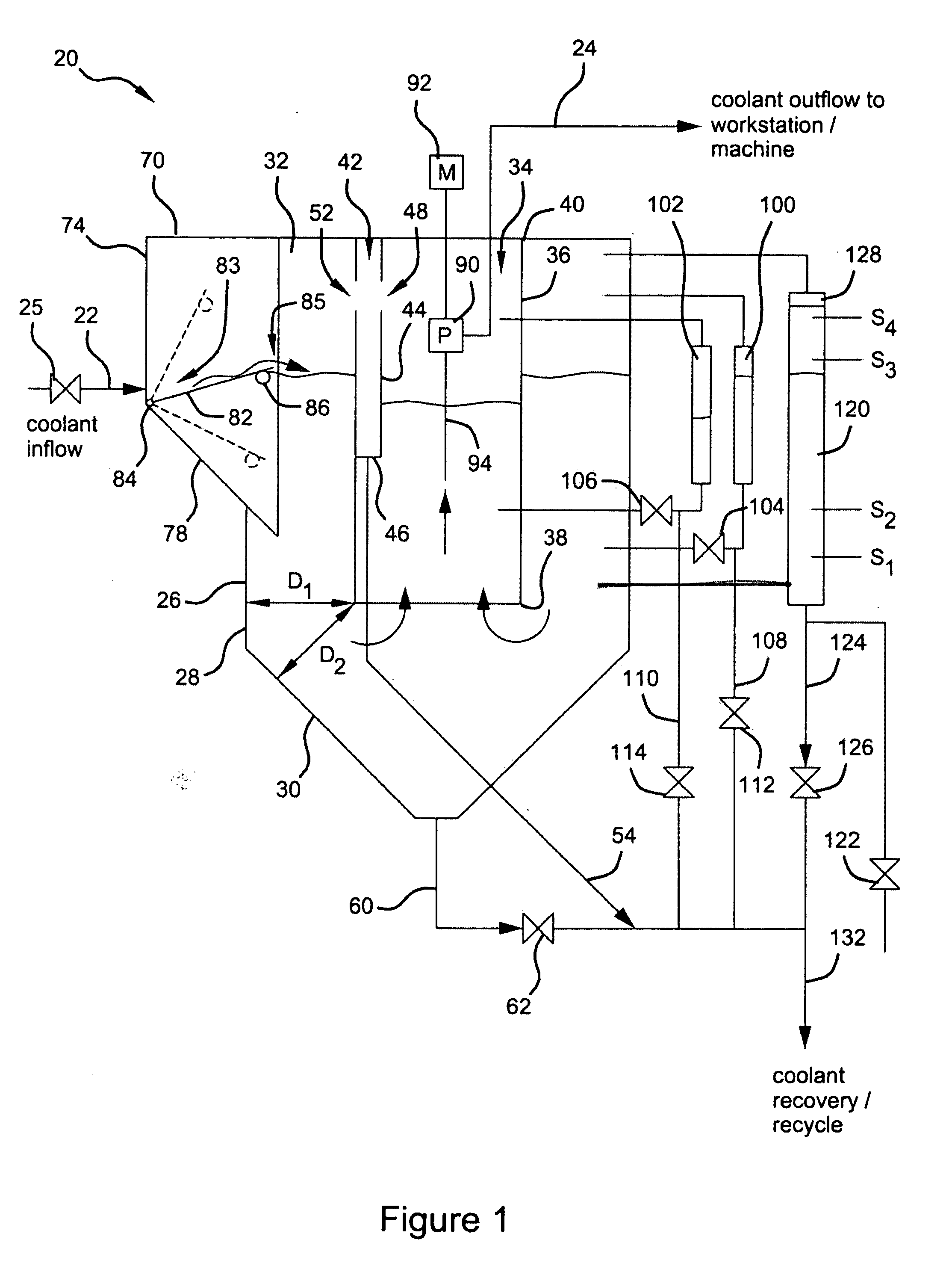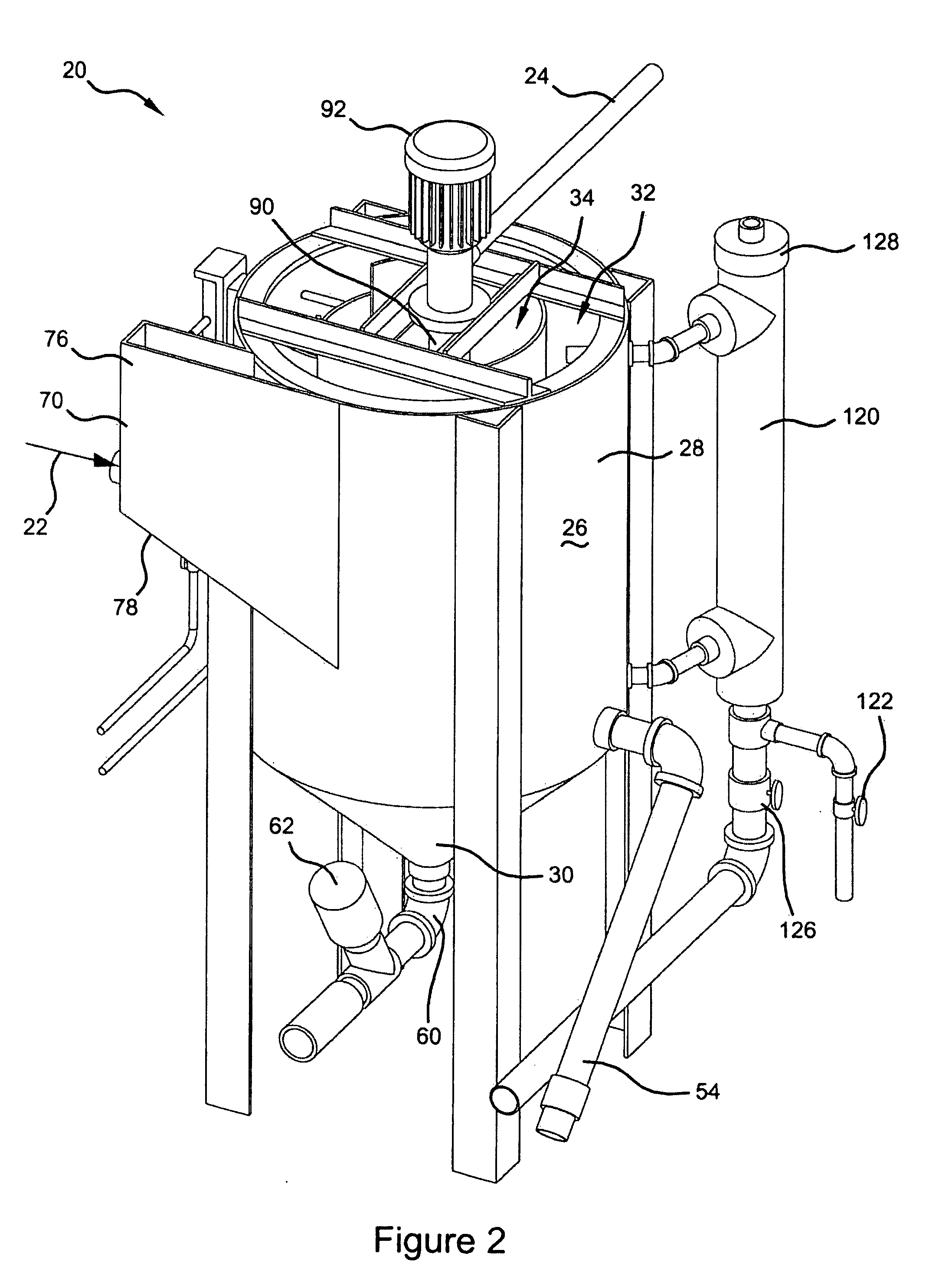Fluid processing system
a technology of fluid processing and fluid, which is applied in the direction of manufacturing tools, transportation and packaging, mechanical equipment, etc., can solve the problems of large size of the settling tank needed damage to the pump(s) used, and large amount of fluid to remove the remaining particles, so as to reduce the amount of settling air, facilitate the settling of particles, and reduce the effect of settling
- Summary
- Abstract
- Description
- Claims
- Application Information
AI Technical Summary
Benefits of technology
Problems solved by technology
Method used
Image
Examples
Embodiment Construction
[0022] The following description is merely exemplary in nature and is not intended to limit the present disclosure, application, or uses. It should be understood that throughout the drawings, corresponding reference numerals (e.g., 20, 1020, etc.) indicate like or corresponding parts and features.
[0023] Referring to FIGS. 1-6, a fluid processing system 20 according to the present disclosure is shown. Fluid processing system 20 can be a coolant processing system and can receive a coolant inflow 22, remove particles and entrained air therefrom, and supply a coolant outflow 24 to a downstream workstation or machine. A valve 25 can control the flow of coolant into coolant processing system 20. Coolant processing system 20 can include a tank 26 having a peripheral side wall 28 and a bottom 30 that define an interior cavity 32. Hereinafter, fluid processing system 20 may be referred to as coolant processing system 20. It should be appreciated, however, that fluid processing system 20 can...
PUM
 Login to View More
Login to View More Abstract
Description
Claims
Application Information
 Login to View More
Login to View More - R&D
- Intellectual Property
- Life Sciences
- Materials
- Tech Scout
- Unparalleled Data Quality
- Higher Quality Content
- 60% Fewer Hallucinations
Browse by: Latest US Patents, China's latest patents, Technical Efficacy Thesaurus, Application Domain, Technology Topic, Popular Technical Reports.
© 2025 PatSnap. All rights reserved.Legal|Privacy policy|Modern Slavery Act Transparency Statement|Sitemap|About US| Contact US: help@patsnap.com



